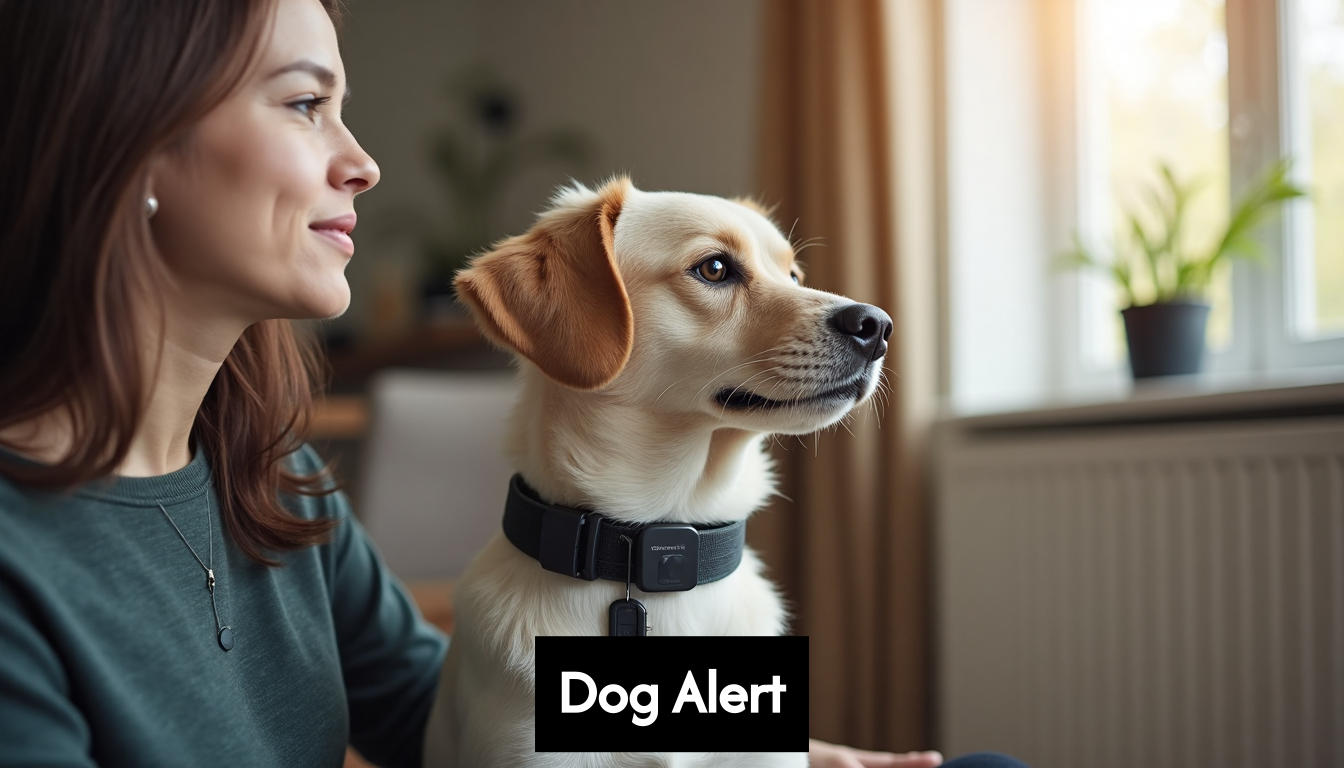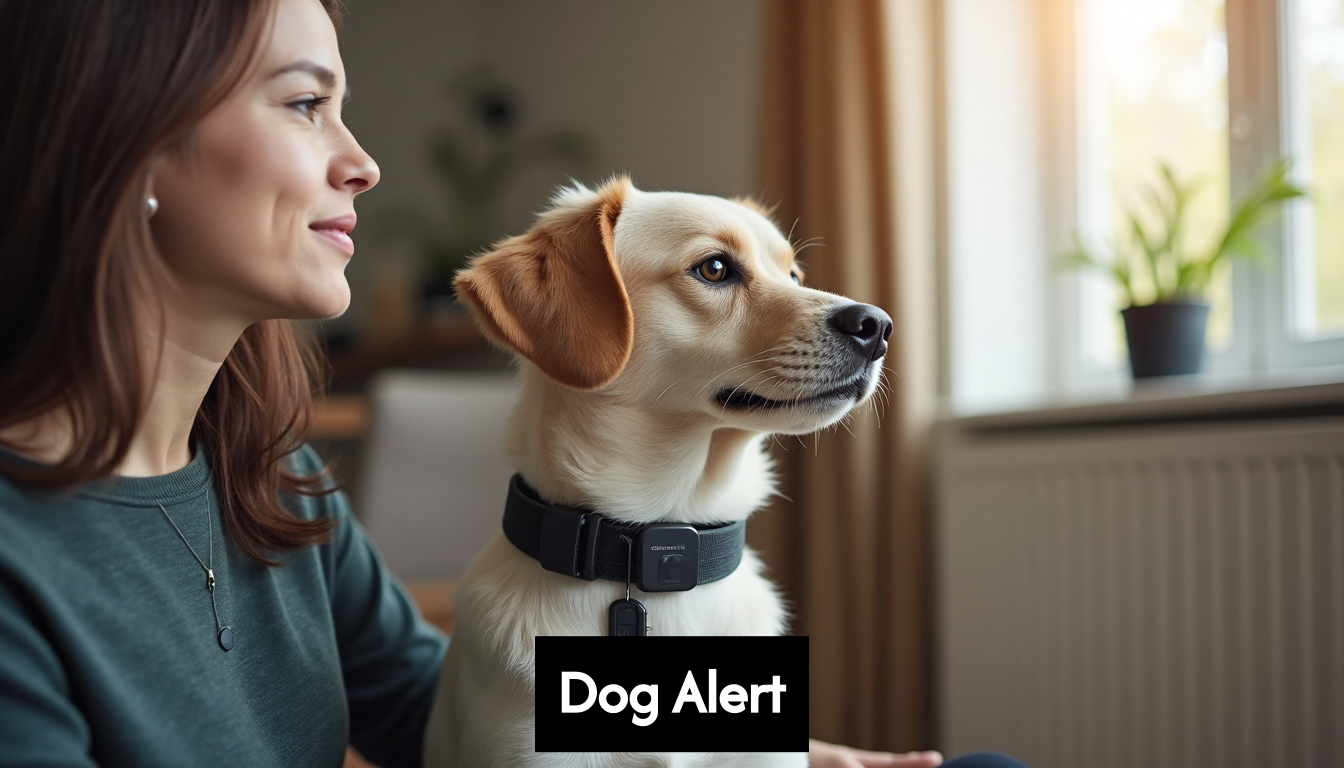
Dog alert tech is getting smarter and faster every year. In 2025, some systems can now detect a dog’s location and monitor its health at the same time. New devices track not only where your dog is but can also pick up on behavior changes or early health warnings, giving owners a real-time safety net. That sounds high tech already, right? Here’s the surprise. Some alert systems actually let dogs press special buttons to communicate directly with their humans, turning the tables on what we think of as ‘pet alerts.’ These gadgets are not just for emergencies anymore. They’re reshaping the way we connect, protect, and understand our dogs like never before.
Table of Contents
- Understanding Dog Alert Options And Their Uses
- Comparing Types Of Dog Alerts: Medical, Intruder, And More
- How To Choose The Right Dog Alert Solution
- Training And Tips For Successful Dog Alerts
Quick Summary
| Takeaway | Explanation |
|---|---|
| Modern dog alert technologies provide comprehensive support | Advanced systems integrate GPS tracking, health monitoring, and communication features to meet diverse needs, ensuring effective communication and safety for dogs and their handlers. |
| Specialized solutions cater to unique scenarios | Different alert technologies are tailored for specific requirements, such as medical alerts for health emergencies, home security for intruder detection, and tailored options for service or rescue needs. |
| Careful selection of alert systems is crucial | When choosing a dog alert solution, assess factors like the dog’s specific needs, technology features, and budget considerations to find the most effective match. |
| Training techniques are essential for effective alerts | Successful alert training requires a combination of positive reinforcement, specific behavioral training, and advanced techniques to develop a reliable communication system between dogs and their handlers. |
Understanding Dog Alert Options and Their Uses
Dog alert options have evolved dramatically in 2025, transforming how owners and handlers communicate with and monitor their canine companions. These innovative systems provide critical safety, communication, and monitoring solutions for various dog owners, from service dog handlers to pet parents with unique needs.
Types of Dog Alert Technologies
Modern dog alert options encompass a wide range of sophisticated technologies designed to bridge communication gaps between dogs and their owners. GPS tracking represents one of the most advanced alert systems available. Learn more about advanced dog safety techniques to understand how these technologies protect your furry friend.
The latest tracking devices go beyond simple location monitoring. According to Tractive, next-generation dog trackers now offer comprehensive health and behavior monitoring capabilities. These systems can provide real-time insights into a dog’s activity levels, potential health concerns, and precise location tracking.
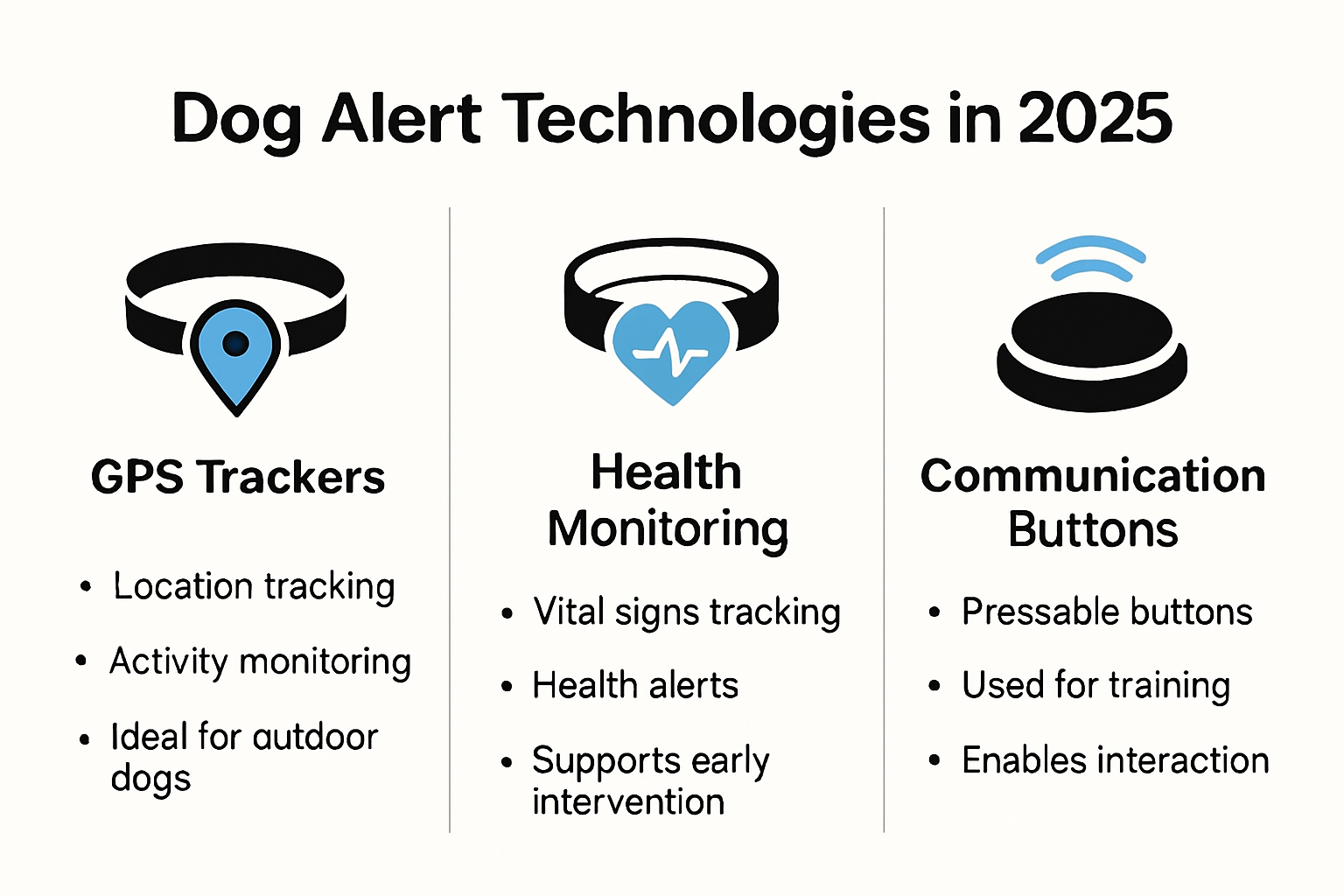
Communication and Safety Alert Systems
Alert systems have become increasingly sophisticated, catering to diverse needs of dog owners. Button communication devices allow dogs to communicate basic needs or signal specific conditions. These systems are particularly valuable for service dogs, senior pet owners, and individuals with disabilities who require additional communication support.
Home security systems have also adapted to pet owners’ needs. ADT now offers motion sensors that can distinguish between pet movements and potential security threats. These advanced systems can detect pets up to 80 pounds and provide indoor camera monitoring with specialized pet detection capabilities.
Specialized Alert Options for Different Needs
Dog alert technologies are not one-size-fits-all. Different scenarios require specific solutions. Service dog handlers might need alert systems that can communicate medical emergencies, while rescue organizations might prioritize tracking and location-based alerts. Senior pet owners may focus on health monitoring and immediate communication systems.
The most effective dog alert options integrate multiple technologies. They combine GPS tracking, health monitoring, communication buttons, and security features to provide comprehensive support. These systems ensure that dogs can communicate their needs, stay safe, and remain connected with their handlers in ways never before possible.
As technology continues to advance, dog alert options will become even more intuitive, responsive, and tailored to individual dog and owner needs. The future of canine communication and safety looks promising, with innovations that prioritize understanding, protection, and connection between humans and their four-legged companions.
Comparing Types of Dog Alerts: Medical, Intruder, and More
Dog alert technologies have diversified significantly in 2025, offering specialized solutions for various critical scenarios. These advanced systems go beyond basic tracking, providing targeted alerts that can potentially save lives, protect property, and enhance communication between dogs and their handlers.
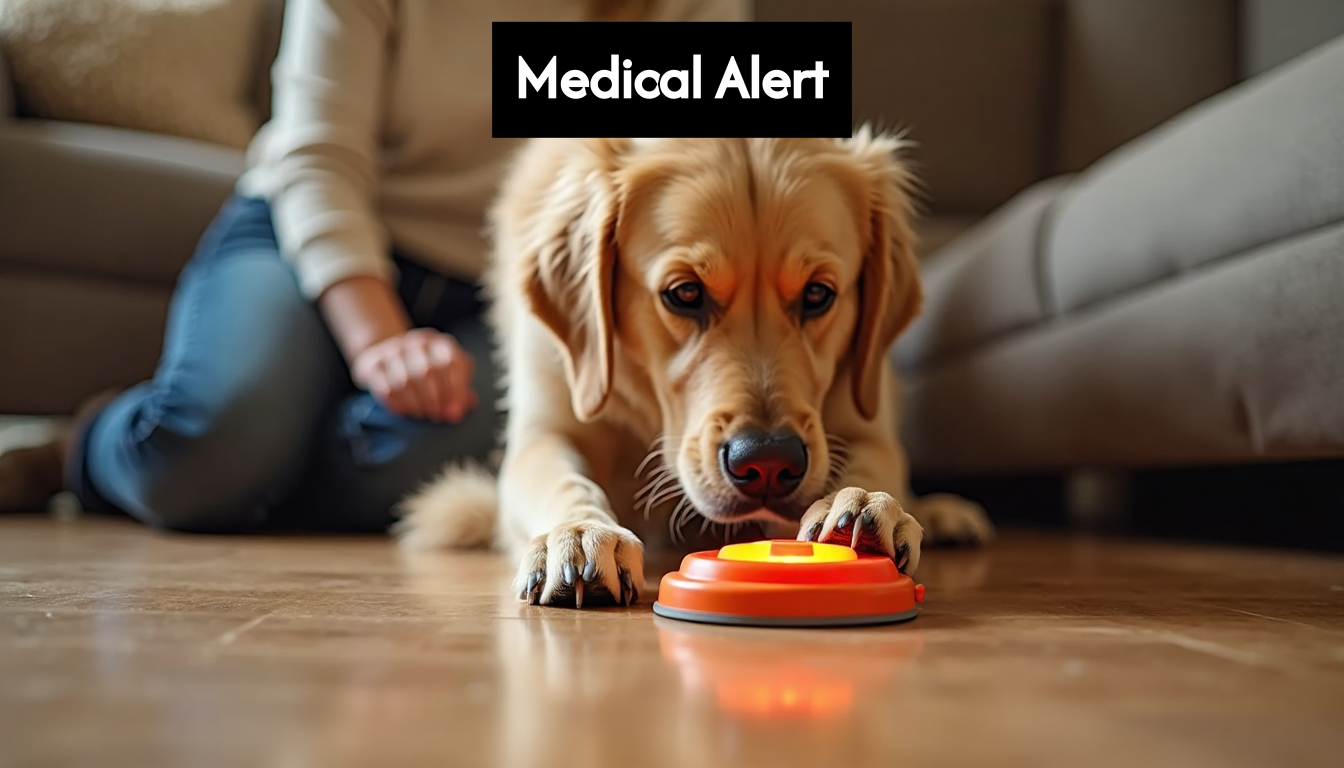
Medical Alert Systems
Medical alert dogs represent a sophisticated category of canine communication technologies. According to the National Council on Aging, these systems are designed to detect and signal specific medical conditions such as impending seizures, dangerous blood sugar fluctuations, or severe allergic reactions. Explore our medical alert device training system to understand how these innovative technologies work.
Next-generation tracking devices have expanded medical monitoring capabilities. Tractive now offers comprehensive health tracking that includes bark monitoring and potential vital sign alerts. These technologies provide real-time insights, allowing handlers and medical professionals to respond quickly to potential health emergencies.
Intruder and Home Security Alerts
Home security alert systems have evolved to become incredibly pet-friendly and sophisticated. ADT demonstrates this advancement with motion sensors that can distinguish between pet movements and potential security threats. These systems can detect pets up to 80 pounds and provide indoor camera monitoring with specialized pet detection capabilities.
Modern intruder alert systems integrate multiple technologies to provide comprehensive protection. They combine motion sensors, camera recognition, and specialized algorithms that can differentiate between normal pet activity and potential security risks. This means dog owners can feel secure knowing their home is protected without creating unnecessary stress for their pets.
Specialized Alert Options for Unique Scenarios
Beyond medical and security alerts, dog alert technologies now cater to increasingly specific needs. Service dog handlers can access systems that provide communication support for various disabilities. Rescue organizations can utilize tracking technologies that help monitor dogs in transition or rehabilitation.
The most advanced alert systems now offer multi-layered protection. They integrate GPS tracking, health monitoring, communication buttons, and security features into comprehensive packages. These technologies ensure that dogs can communicate their needs, maintain safety, and stay connected with their handlers in unprecedented ways.
As technology continues to advance, dog alert options will become more intuitive and personalized. The future promises even more refined systems that understand the unique relationship between dogs and their human companions, offering protection, communication, and peace of mind like never before.
How to Choose the Right Dog Alert Solution
Selecting the ideal dog alert solution requires careful consideration of your specific needs, your dog’s unique characteristics, and the potential scenarios where communication and safety are critical. The right alert system can make a significant difference in your dog’s quality of life and your peace of mind.
Assessing Your Specific Requirements
Every dog owner’s situation is unique. Service dog handlers, senior pet owners, and individuals with specific medical conditions will have different alert needs. Learn strategies to improve your dog’s safety and understand the critical factors in selecting an appropriate alert system.
Key considerations include the dog’s size, age, health conditions, and primary purpose. A service dog for someone with PTSD might benefit from different technologies compared to a rescue dog in rehabilitation. The CanineAlert Device demonstrates how specialized technologies can monitor specific health conditions like anxiety episodes through advanced biometric tracking.
Evaluating Technology Features
Modern dog alert solutions offer a range of sophisticated features. GPS tracking, health monitoring, communication buttons, and security integrations are now standard. When comparing options, look for systems that provide comprehensive support.
Temperature monitoring represents an critical safety feature. According to K9 Heat Alert Systems, customizable temperature threshold settings can prevent dangerous situations when dogs are left in vehicles. Look for alert systems that offer multiple layers of protection and real-time monitoring.
Budget and Long-Term Compatibility
Budget considerations are crucial when selecting a dog alert solution. While advanced technologies offer impressive features, they come with varying price points. Consider not just the initial investment but also ongoing costs like subscription fees, maintenance, and potential training requirements.
Compatibility with your existing technologies and lifestyle is equally important. Some alert systems integrate seamlessly with smartphones and smart home devices, providing more comprehensive monitoring. The most effective solutions grow with your needs, offering upgradable features and adaptable technologies.
The ideal dog alert solution is more than a technological device. It’s a communication bridge between you and your canine companion. By carefully evaluating your specific needs, understanding available technologies, and considering long-term compatibility, you can select a system that provides safety, communication, and peace of mind.
As dog alert technologies continue to evolve, the future promises even more intuitive and personalized solutions. Investing time in selecting the right system today can create a safer, more connected relationship with your dog tomorrow.
Training and Tips for Successful Dog Alerts
Successful dog alert training requires a strategic, patient approach that combines scientific understanding of canine behavior with consistent, positive reinforcement techniques. The goal is to develop a reliable communication system between dogs and their handlers that can potentially save lives or provide critical support.
Foundational Training Principles
Explore expert dog obedience training methods to understand the core principles of effective alert training. According to Affordable Dog Training, positive reinforcement remains the cornerstone of successful dog training. This approach involves immediate rewards for desired behaviors, creating a strong motivation for the dog to repeat those actions.
Science-based training methods, including operant and classical conditioning, provide a sophisticated framework for teaching alert behaviors. These techniques focus on understanding canine psychology, identifying behavioral triggers, and adapting training to each dog’s unique personality and capabilities. The key is to create a clear, consistent communication system that the dog can reliably perform across various environments.
Specific Alert Behavior Training
Training specific alert behaviors requires careful, methodical approach. According to Dog Training University, effective alert training involves precisely pairing a specific alert behavior with a physical cue or medical event. For service and medical alert dogs, this might mean teaching a distinct action like a nose boop, chin rest, or specific body positioning that clearly communicates a particular need or condition.
Generalization is crucial in alert training. Dogs must learn to perform their alert behavior consistently, regardless of environment or distractions. This means practicing in multiple settings, with varying levels of complexity, and gradually increasing the challenge. Handlers should start in controlled environments and progressively introduce more complex scenarios to ensure the dog’s alert remains reliable.
Advanced Training Techniques
Advanced alert training goes beyond basic commands. It requires building a deep understanding between the dog and handler. This involves developing the dog’s ability to read subtle cues, understand complex instructions, and respond with precision. Handlers must invest significant time in building trust, creating a strong communication bond that allows for nuanced interactions.
Technology can support alert training in unprecedented ways. Modern training tools offer video tracking, behavior analysis, and progress monitoring that can help handlers refine their training approach. However, these technologies should supplement, not replace, the personal connection and consistent training that forms the foundation of successful alert behaviors.
The most successful alert dogs are those with handlers who approach training as a collaborative journey. It requires patience, consistency, and a deep commitment to understanding the unique capabilities of each individual dog. As alert technologies continue to evolve, the bond between dogs and their handlers becomes increasingly sophisticated, offering unprecedented levels of support and communication.
Frequently Asked Questions
What are the best dog alert options available in 2025?
Modern dog alert options include GPS tracking devices, health monitoring systems, and communication buttons that allow dogs to signal their needs. These advanced technologies cater to various scenarios, ensuring effective communication and safety for dogs and their handlers.
How can dog alert systems improve my pet’s safety?
Dog alert systems enhance safety by providing real-time tracking, health monitoring, and alert features that can detect medical emergencies or environmental threats, allowing owners to respond quickly to their dog’s needs.
Are there specific dog alert systems designed for service dogs?
Yes, there are specialized alert systems designed for service dogs that assist individuals with disabilities. These systems can communicate medical emergencies and offer unique features tailored to the specific needs of service dogs and their handlers.
What should I consider when choosing a dog alert solution?
When selecting a dog alert solution, consider your specific requirements, the technology features offered, potential budget, and how well the system integrates with your lifestyle. This will help ensure that you choose the most effective option for you and your dog.
Ready for the Next Level of Dog Communication and Safety?
If you care about your dog’s wellbeing and independence, you know how stressful it can be to worry about emergencies or missed signals. The article highlighted real pain points like ensuring your dog can easily alert you in medical situations, track their location, and even press a button to communicate directly. These challenges are especially important for service dog handlers, seniors, or anyone who wants advanced peace of mind with their canine companion.
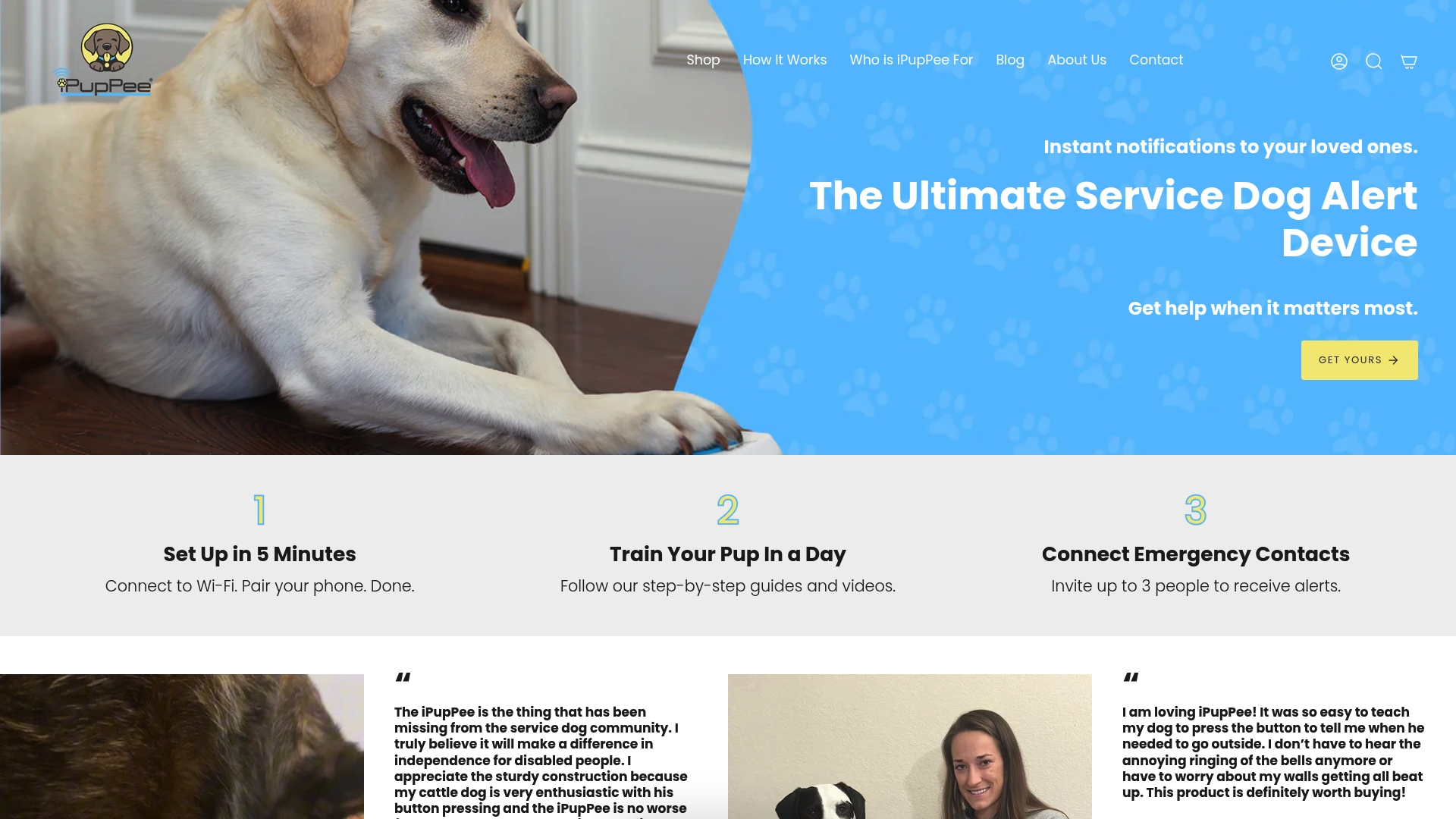
Experience how our iPupPee device turns smart alerts and effortless communication into everyday reality. With a simple button press, your dog can notify you instantly—whether you’re living alone, rely on a service dog, or just want better safety for your furry friend. Explore our home page for customer stories and training support, or learn how you can improve dog safety right now. Don’t wait for a crisis to discover the benefits—join the future of dog communication today.

